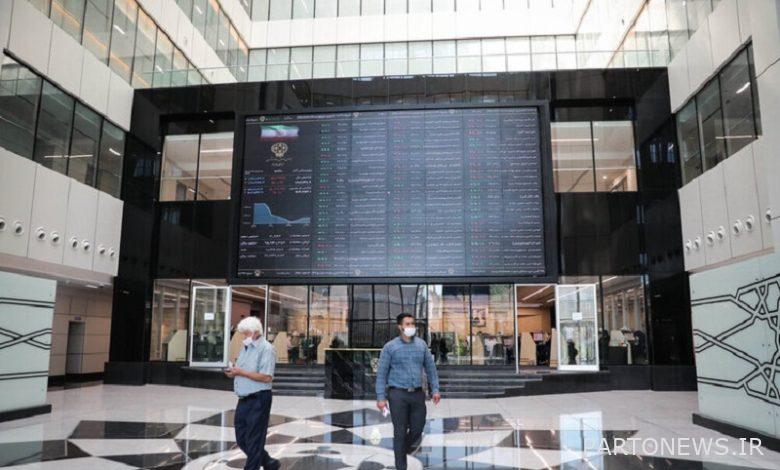The secret of stock market divergence – Tejaratnews

According to Tejarat News, Tehran Stock Exchange had a weak weekly trading and the total index of the stock market fell by 0.24% in the total trading of the week ending December 2.
According to Fardai Ekotan, this is the second week in a row that this stock market index experiences a small fluctuation in the downward direction. The equal weight index increased by 1.45% this week and continued to climb for the fourth consecutive week. The average daily value of stock transactions also decreased by 6% compared to the previous week and reached 3442 billion tomans.
The most important reason for this divergence is the preference for stocks of groups with lower market value and the caution of stock exchanges in commodity-oriented stocks. Where, on the one hand, the supply of high-volume cars in the commodity exchange has reduced the hope of solving the problems caused by the command economy in the automobile industry and provided the basis for increasing the interest of investors in the aforementioned stocks, and on the other hand, some domestic industries such as food due to the publication of reports A new function on the Kodal system was included in the investors’ shopping list to see a noticeable difference in the performance of the two main indicators of the Tehran Stock Exchange. In contrast to the calmness of the dollar market and the uncertainty of the future of the commodity market, the shareholders were more careful to trade in stocks related to global markets.
Increasing systematic risks in the glass hall
Yesterday, the United Nations Human Rights Council passed a resolution against Iran regarding what it called the “situation of human rights in Iran” with 25 votes in favor, 15 votes against and 15 abstentions. The approval of this resolution means the council’s agreement to create a “fact-finding commission” regarding the allegations regarding “human rights violations by Iran” in recent events. The event that after the possibility of revitalizing the JCPOA has faded in the eyes of investors, it can also affect stock transactions in the glass hall by increasing systematic risks.
Will the stock market lose its dollar stimulus?
Low volatility transactions of the dollar last week, despite the publication of news that indicated a decrease in optimism about the possibility of the JCPOA revival and an increase in systematic risks, was an interesting event that naturally led to the reaction of shareholders. Traders who think that they should either be happy that stock companies have access to a real profit with the nuclear deal and the lifting of sanctions, or seek to earn a nominal profit from the growth of the dollar price and the increase in inflationary expectations.
In the meantime, it is said that the central bank’s release of coin certificates in the fourth week of November and foreign currency bonds from the beginning of last week can also affect the price trend of American bills and cause a further drop in the price of the dollar. Therefore, now that the stock market has lost its stimulus to some extent, it should be seen how it will react to the fluctuation of the dollar price. The price of the dollar increased by 0.1% last week. But the coin was 2% more expensive.
Fear and hope of global markets for Tehran Stock Exchange
Commodities did not appear very favorable in last week’s trading of world markets. Predictions indicate that the global economy is now moving towards a period of recession, after many positive and negative events in the past two years, such as the Corona epidemic, improvement in global demand, increase in inflation, contractionary policies of central banks, etc., which will reduce the demand for Commodities have decreased and can continue to lead to a further decrease in their prices. In the last week, oil and metals went through a downward trend, and except for the price of copper, which remained almost unchanged, the prices of other metals had a weekly decrease between 2 and 3%, and oil indices were also about 2% cheaper than the previous week. Exchanges in commodity-oriented stocks should be followed more cautiously.
However, according to the minutes of the Federal Open Market Committee (FOMC) meeting published on Wednesday evening (Iran time), Federal Reserve officials have agreed to reduce the pace of interest rate increases compared to the previous four periods, as this will allow policymakers to to evaluate the impact of recent contractionary policies on the state of the economy. An event that can change these deals a little.
Green signal from the commodity exchange
In the days when investors are still hesitating towards the entry of small capitals into the glass hall, in the past week, with the entry of one of the domestic high-circulation cars to the commodity exchange, the shares of automobile manufacturers have attracted the attention of stock market activists, and the index of this industry has a weekly growth of 6.7%. registered
The latest surveys report the accumulated losses of more than 79 billion tomans of three major car manufacturers until the end of September 1401. According to the 6-month reports, Iran Khodro has made a loss of 37% more than its capital with an accumulated loss of 41.4 thousand billion tomans. Saipa’s accumulated loss by the end of September 1401 amounted to 26 thousand billion tomans, which indicates a 34% increase compared to the 19.5 thousand billion tomans capital of this car manufacturer, and Pars Khodro; The company, after the 4-month suspension of the symbol, was transferred to the base market on Saturday after being expelled from the main board of the stock exchange. This company, with a capital of 11.4 thousand billion tomans, has registered an accumulated loss of 11.5 thousand billion tomans until the end of September.
According to Article 141 of the Trade Law, if at least half of the company’s capital is lost due to losses, it indicates that the company is facing serious financial problems. The conditions that have caused all three car manufacturers to enter the warning list of the stock exchange organization and become among the symbols subject to the suspension process in recent years and go to the point of bankruptcy many times, but each time with a method (such as increasing capital from the place of revaluation of assets). They changed the conditions a little. Pars Khodro, however, was finally trapped and after the opposition of the stock exchange organization to increase the recapitalization of this car manufacturer, it was exiled to the basic market (yellow board).
Now, the beginning of the supply of domestic products in the commodity exchange has strengthened the hope of the end of the command economy in this industry. On Wednesday, it was also reported that Iran Khodro Company plans to launch Tara and 207 automatic cars on December 8. It seems that if the continuation of car transactions in the transparent and competitive market of the commodity exchange is accompanied by the liberalization of car imports, the reduction of import tariffs and the introduction of technology with the presence and participation of foreign car manufacturers in the event of the lifting of sanctions, perhaps we can witness the return of peace to the car market and profitability. It was the general public and producers.
Slow growth of Nima dollar
At the end of the week, the semi-dollar reached the limit of 28 thousand tomans to increase the price by 0.5% on a weekly basis. This currency still has a gap of 7500 Tomans with the free dollar price and has become one of the most important concerns of industries and people of the capital market for some time. However, the continued growth of this currency, although very slow, can send a good signal to the market. In the meantime, the stock exchanges are looking at the decisions of the government and parliament and the budget of 1402 to see what will be the fate of this important stock market currency. Will it turn into another 4,200 or will we move towards a single currency rate?

